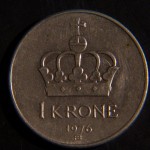Brent crude fell on Monday, while West Texas Intermediate slid to the lowest in almost six years, as the euro tumbled to near an 11-year low against the dollar and Saudi Arabias new king pledged to maintain his predecessors oil policy.
On the New York Mercantile Exchange, WTI crude for delivery in March slid 1.38% to $44.96 per barrel by 7:58 GMT, having earlier fallen to $44.35, the lowest since April 2009. The contract fell 7.2% last week, an eight weekly decline in nine.
Meanwhile on the ICE, Brent for settlement in the same month dropped 1.46% to $48.08 per barrel, holding in a daily range of $48.58-$47.85. The European crude benchmark settled 0.56% higher at $48.79 on Friday, falling for a ninth straight week. Brent traded at a premium of $3.12 to its US counterpart, down from the prior sessions settlement at $3.20.
The market was pressured on Monday after the Greek opposition party Syriza, which has pledged to write down the majority of the countrys debt and leave the Eurozone, won the snap elections on Sunday. The uncertainty caused sent the euro falling to the lowest in more than a decade against the US dollar, weighing on dollar-denominated commodities such as oil.
The common currency came under heavy pressure last week after the European Central Bank announced a bond buying program that would flood markets with over a trillion euros through next year in a push to fight deflation and spur economic growth.
The US dollar index for settlement in March rose 0.23% to 95.275 by 8:02 GMT, having earlier surged to 95.850, the highest in at least 12 years. The US currency gauge has risen for six straight weeks. A stronger greenback makes dollar-denominated commodities more expensive for foreign currency holders and limits their appeal as an alternative investment.
Saudi policy
Prices initially rallied on Friday as news of the death of King Abdullah of Saudi Arabia sparked speculation that the shift of power may change the countrys oil policy.
However, those speculations quickly dissipated after his successor, King Salman Bin Abdulaziz, was quick to keep oil minister Ali al-Naimi on his post, pledging to maintain King Abdullahs policies in a speech on national television.
Smaller OPEC producers, including Venezuela, have called for the group to reduce its output in order to normalize the market. However, the oil cartel, steered by leading producer Saudi Arabia, decided at a November 27th meeting in Vienna to keep its collective production quota of 30 million barrels per day unchanged in order to defend market share.
Prince Alwaleed Bin Talal Al Saud said that Saudi Arabia will not cut production as the gap will be filled by other producers. The groups major producers have attributed the markets recent collapse to rising non-OPEC supply, thus denying the obligation to scale back own production in order to normalize prices.
US output
Rising US crude output and inventories pushed up the differential between Brent and WTI after it recently had fallen to less than $1. The Energy Information Administration reported on Thursday that US producers pumped 9.186 million barrels per day of crude in the seven days through January 16th, compared to 9.192 million a week earlier which was the highest on weekly statistics dating back to January 1983.
The nation’s crude oil inventories surged by 10.07 million barrels last week to 397.9 million, exceeding analysts’ projections for a jump of 2.62 million. This was the biggest weekly gain since March 2001. Supplies at the Cushing, Oklahoma, storage hub rose for another week to 36.8 million barrels from 33.9 million a week earlier.
According to a January 23rd report by the American Petroleum Institute, crude inventories in the US rose by 7.4% in December from a year earlier to 383.5 million barrels, the highest for a December since 1930. Output surged 16% to 9.12 million bpd, the highest monthly production pace since February 1986.
Pivot points
According to Binary Tribune’s daily analysis, West Texas Intermediate March futures’ central pivot point is at $46.19. In case the contract breaches the first resistance level at $47.16, it may rise to $48.74. Should the second key resistance be broken, the US benchmark may attempt to advance $49.71.
If the contract manages to breach the first key support at $44.61, it might come to test $43.64. With this second support broken, movement to the downside could continue to $42.06.
Meanwhile, March Brent’s central pivot point is projected at $49.05. The contract will see its first resistance level at $49.54. If breached, it may rise and test $50.30. In case the second key resistance is broken, the European crude benchmark may attempt to advance $50.79.
If Brent manages to penetrate the S1 level at $48.29, it could continue down to test $47.80. With the second support broken, downside movement may extend to $47.04 per barrel.





